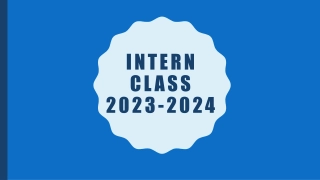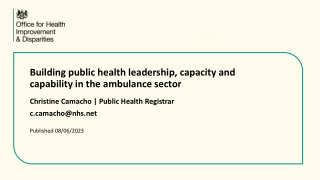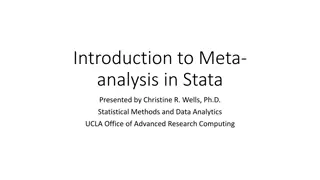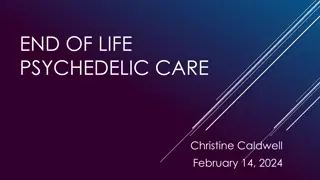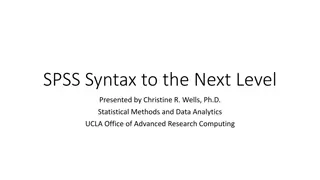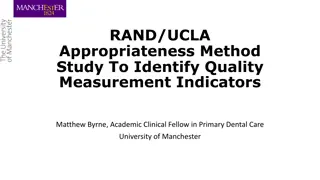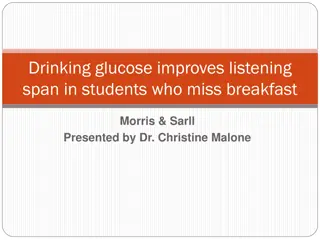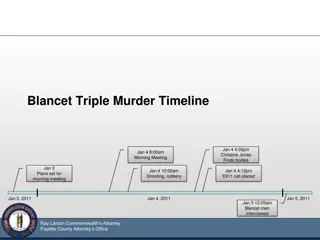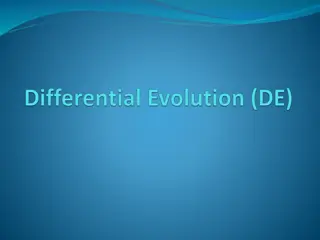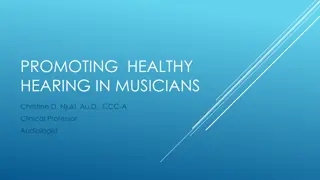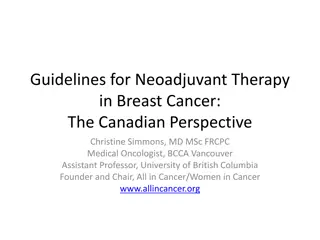
Options for Modifying or Replacing the Affordable Care Act: A RAND Corporation Analysis
Explore potential modifications or replacements for the Affordable Care Act (ACA) as outlined by Christine Eibner of the RAND Corporation. Learn about the impact of the ACA, the key mechanisms for expanding insurance coverage, and the interdependence of individual market reforms. Gain insights into the estimated effects of repealing the ACA on the federal deficit. Discover valuable research conducted by RAND Health to enhance policy and decision-making in the healthcare sector.
Download Presentation

Please find below an Image/Link to download the presentation.
The content on the website is provided AS IS for your information and personal use only. It may not be sold, licensed, or shared on other websites without obtaining consent from the author. If you encounter any issues during the download, it is possible that the publisher has removed the file from their server.
You are allowed to download the files provided on this website for personal or commercial use, subject to the condition that they are used lawfully. All files are the property of their respective owners.
The content on the website is provided AS IS for your information and personal use only. It may not be sold, licensed, or shared on other websites without obtaining consent from the author.
E N D
Presentation Transcript
? Health Reform 2.0: Options for Modifying or Replacing the Affordable Care Act Christine Eibner RAND Corporation November 18, 2016
About RAND ? Non-partisan, non-profit research institution Mission is to improve policy and decision-making through research and analysis RAND Health conducts objective research and analysis for the federal government, state government, foundations, and other stakeholders Areas of research include Delivery system reform Opioids and substance use disorders Health information technology Health care value and quality Population Health Veterans health care
ACA sought to expand insurance coverage through several mechanisms Medicaid expansion in participating states Mandate requiring most people to get insurance Penalties for large employers that did not offer coverage Modifications to individual market, which includes marketplaces Insurers cannot deny coverage Insurers cannot charge older adults more than 3 times as much as younger adults Can t upcharge, exclude coverage for pre-existing conditions Tax credits for low and moderate income individuals without other affordable coverage Other changes, including allowing young adults to remain on parents employer plans
Individual market reforms are dependent on other provisions Guaranteed access to insurance without exclusions, upcharges Individual Mandate Premium Tax Credits Insurance Regulations Enable older, sicker to enroll without exclusions, upcharges Incentivizes young and healthy to enroll Incentivize young and healthy to enroll
20 million became newly insured due to the ACA, with marketplace tax credits accounting for roughly of gains Premium Tax Credits on the Marketplaces Other factors 26% 30% 44% Medicaid Sources: Uberoi, Finegold, and Gee, 2016 (ASPE Issue Brief); Frean, Gruber, and Sommers, 2016 (NBER Working Paper #22213)
CBO estimated that repealing the ACA would increase the federal deficit by ~$145 billion between 2017 and 2025 120 100 80 60 40 20 0 2017 2018 2019 2020 2021 2022 2023 2024 2025 -20 -40 -60 Impact of ACA Repeal on Federal Deficit, in Billions Impact of ACA Repeal on Federal Deficit, in Billions Source: CBO, June 2015
Despite the insurance gains and deficit impact, public is divided on view of the law Given what you know about the Given what you know about the health law, do you have a generally health law, do you have a generally favorable or generally unfavorable favorable or generally unfavorable view of it? view of it? Reasons for unfavorable opinion include: Concerns about cost of coverage Perception that law gives government too big a role 50% 45% 45% 45% 45% 45% 40% 35% 30% 25% 20% 15% 10% 10% 10% 5% Source: Kaiser Health Tracking Poll, October 27, 2016 0% Favorable Unfavorable Don't Know
Parts of the law enjoy widespread, bipartisan support Percent with Favorable Opinion of Each Provision Total Total 80% Democrats Democrats 87% Republicans Republicans 76% Extension of employer coverage to dependents <26 Closing the Medicare donut hole Subsidy Assistance Eliminate out-of-pocket costs for preventive services Medicaid Expansion Guaranteed Issue 79% 89% 73% 77% 77% 89% 81% 65% 75% 74% 70% 89% 74% 62% 69% Kaiser Health Tracking Poll, March 2014
As Congress looks to reform or replace the ACA policymakers may wish to avoid adverse consequences, such as: Coverage loss among the 20 million people who have gained insurance Return to an era of pre-existing conditions exclusions and denial of coverage Deficit increases stemming from repeal of ACA s revenue-generating provisions Continued premium increases in the individual market
Repeal and replace proposals have some similarities Trump* Trump* Ryan Ryan Burr, Burr, Hatch, Hatch, Upton Upton X Yes** 5:1** X X X X X X X X Continuous Coverage Requirement Guaranteed Issue Premium Regulation Tax Credits Health Savings Accounts High Risk Pools Sales Across State Lines Medicaid Block Grants Medicare Reforms Limits on Employer Exclusion Transparency X Yes** 5:1** X X X X X X X ? X X X X X * Trump s plan is evolving; assessment is based on current website and public statements. Ryan s plan reflects A Better Way, published on 6/22/16; The Burr, Hatch, and Upton plan reflects the Patient CARE Act, published on 2/5/16. ** Tied to continuous coverage requirement
Repeal and replace proposals have some similarities Trump* Trump* Ryan Ryan Burr, Burr, Hatch, Hatch, Upton Upton X Yes** 5:1** X X X X X X X X Continuous Coverage Requirement Guaranteed Issue Premium Regulation Tax Credits Health Savings Accounts High Risk Pools Sales Across State Lines Medicaid Block Grants Medicare Reforms Limits on Employer Exclusion Transparency X Yes** 5:1** X X X X X X X ? X X X X X * Trump s plan is evolving; assessment is based on current website and public statements. Ryan s plan reflects A Better Way, published on 6/22/16; The Burr, Hatch, and Upton plan reflects the Patient CARE Act, published on 2/5/16. ** Tied to continuous coverage requirement
We used the COMPARE microsimulation model to estimate the effects of health care reforms Survey Data from Survey Data from Census, AHRQ, Kaiser Census, AHRQ, Kaiser Economic Theory and Economic Theory and Past Experience Past Experience Policy Proposals Policy Proposals under Consideration under Consideration Replicate population of US families and businesses Estimate how families and firms will respond to policy changes Modify Choices and outcomes based on proposed policy changes COMPARE Model Overview
Reforms Under Consideration Generally Reduce Coverage Relative to ACA, but impacts vary 300 252 243 250 234 232 227 200 150 100 50 0 Affordable Care Act Millions Insured, Alternative Scenarios Repeal Repeal+Block Grant Repeal+Sales Across State Lines Repeal+CARE Act Sources: Saltzman, Eibner (2016) and Eibner, Nowak (2016)
Reforms reduce spending, but may increase the deficit if revenue-generators are not replaced Spending Revenue Deficit 40 20 Billions of Dollars, 2018 Billions of Dollars, 2018 0 -20 -40 -60 -80 Repeal Repeal+Block Grants Repeal+Sales Across State Lines Repeal+CARE Act Sources: Saltzman, Eibner (2016) and Eibner, Nowak (2016)
What could policymakers do to prevent coverage losses and deficit increases? Subsidies are important to expanding coverage Carrots (e.g. tax credits) may work better than sticks (e.g. mandate) Tax exclusions/deductions less-effective than means-tested approaches that are more generous for low-income people Medicaid expansion accounts for a large share of ACA s coverage gains Block grants provide more flexibility to the states and limit federal costs, but impact is uncertain Find replacements for ACA s revenue-generators
Time may also be ripe to consider out of the box alternatives to the ACA Two ideas that RAND has examined Eliminate employer tax exclusion, re-direct savings to means-tested subsidies Provide all Americans with a high-deductible health plan, funded with a per- capita tax Both would insure more people, at a lower cost, than the ACA Redirect Redirect employer employer exclusion to exclusion to tax subsidies tax subsidies +4M Give everyone Give everyone a high a high- - deductible deductible plan plan +16M Change in Coverage Change in Deficit -$14B -$40B See Saltzman, Eibner and Enthoven, Health Affairs (2015); Hagopian and Goldman, National Affairs (2012); Liu, Pardee-RAND Dissertation (2016).
RAND is a Resource for Congress Briefings Testimony Meetings Congressionally mandated studies Newsletters and alerts Delivery of reports
Contact Us Kerry Allen Health Legislative Analyst Kerry_Allen@rand.org 703-443-1100 x5774 Christine Eibner Senior Economist Christine_Eibner@rand.org 703-413-1100 x5913 Jayme Fuglesten Director, OCR Jayme_Fuglesten@rand.or g 703-413-1100 x5363


